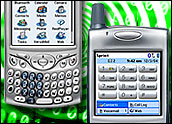
The Environmental Protection Agency (EPA) last week approved a new framework to regulate the disposal of old computer monitors with cathode ray tubes (CRTs) and aged TVs loaded with mercury, a move that is being applauded by the computer industry.
“CEA agrees with the EPA’s statement that a CRT not recycled is an opportunity lost,” said Parker Brugge, senior director of the Consumer Electronics Association (CEA), an industry trade group based in Arlington, Va. “The ruling is an important step towards increased recycling and resource recovery on a national scale.”
The new rules have been in the works since 2002.
An economic analysis conducted by the EPA indicates that approximately 52 percent of American households have computers, while there are 100 million Americans who have two televisions each. About 20 million TVs are disposed of every year, according to the EPA, based on sales of new TVs. About 37 million new computer monitors are sold yearly. All told, there are about 9,600 tons of CRT glass disposed of annually — much less than glass makers’ recycling capacity.
Spawning a New Industry
“Recycling glass from computers and televisions is still largely a new industry,” the preamble to the new EPA rule states. “However, the number of units available for reuse or recycling is growing rapidly, and state and industry initiatives to promote recycling are increasing. EPA is eager to see this industry grow, in part because reusing and recycling these materials saves valuable natural resources and avoids their disposal in landfills and incinerators.”
Many used CRTs and items of mercury-containing equipment are currently classified as “characteristic hazardous wastes” under the Resource Conservation and Recovery Act (RCRA), meaning the old computer parts are subject to the hazardous waste laws.
The EPA’s new rule changes the definition of “solid waste,” streamlining the RCRA management requirements for discarded CRTs, as well as for glass removed from CRTs and later sent for recycling.
The EPA spent several years clarifying the status of used CRTs and sought comment from the industry on how to best streamline management requirements for used mercury-containing equipment.
Now, the actual recycling will be conducted on a local level, managed by state regulations in compliance with the new federal rule. “To promote legitimate recycling of CRTs, we encourage the states to implement rules consistent with the EPA’s regulations,” said Brugge. This will lead to a “harmonized national solution for electronics recycling that establishes consistency for industry, government and, above all, consumers.”
An Important Step
The new rules will help keep mercury out of local landfills, the EPA claimed.
“Currently, businesses and other organizations that recycle or dispose of their CRTs are confused about the applicability of hazardous waste management requirements to their computer or television monitors,” the agency said in a statement. Revising the regulations will “encourage opportunities to safely collect, reuse and recycle CRTs.”
Interest in recycling computer and electronics products is increasing nationally. Last week, the U.S. Department of Commerce issued a report on electronic waste, and computer maker Dell said it would help customers recycle their old PCs, even if they don’t buy a new one from Dell.
Investment in the nascent computer recycling business also is picking up.
Greenwich, Conn.-based Catterton Partners, a private equity firm, recently invested US$50 million in Newmarket IT, enabling an expansion of the company’s recycling operations.
The seven-year-old firm recycles and refurbishes computers that have come off lease, and is set to receive the funds Aug. 8, after which it will open facilities in Reno, Nev., and in the Midwest.
Jake Player, the former head of Dell’s asset recovery services, is the new president of the company.
Newmarket is able to process about 3,500 machines daily at its Austin, Texas, facility, which equates to roughly 1.3 million PCs per year.




















































